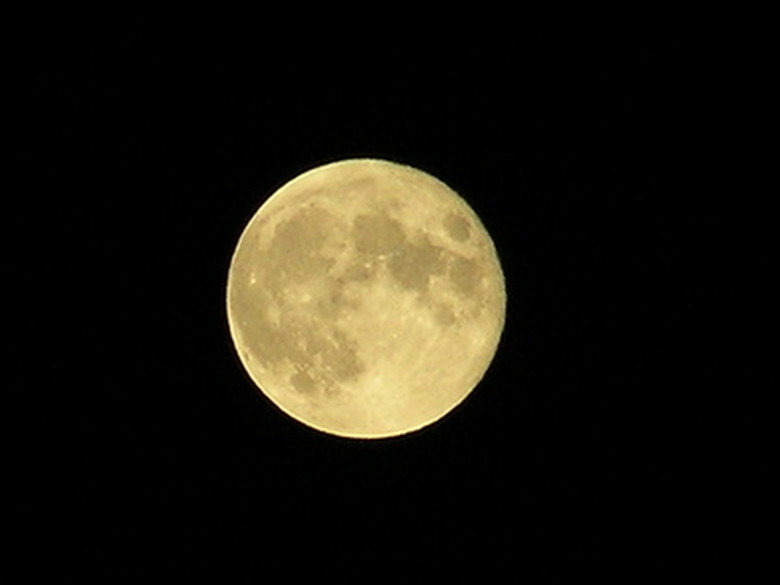How To Plant Seeds By The Moon
Things Needed
- Plant seed
- Calendar with lunar phases
- Garden hoe or yardstick
Lunar gardening, the custom of using the phases of the moon to determine when to plant seeds, is a popular but fairly unsubstantiated practice. Proponents of the method—which is also touted in the annual Old Farmer's Almanac—claim that the gravitational pull of the moon on the Earth affects how certain types of plants develop, depending on the lunar phase. According to the practice, root crops should be planted during a waning moon, when gravitational forces are at their weakest, and aboveground crops should be planted during waxing moon phases.
Determine What to Plant and When
Step 1
Organize the seeds for planting to determine the order in which they should be planted, beginning with the earliest spring vegetables like peas and radishes then progressing to warm-weather crops like zucchini, corn and beans.
Step 2
Look at a calendar to determine the current lunar phase. A new moon marks the beginning of a two-week waxing moon phase, while a full moon marks the beginning of a waning moon phase.
Step 3
Reorganize each of the seed groups within each season to align with a favorable planting interval. Plan to plant aboveground crops (peas, Swiss chard, spinach) when the moon is waxing and belowground crops (beets, radishes, carrots, parsnips) when the moon is waning toward new.
- Lunar gardening, the custom of using the phases of the moon to determine when to plant seeds, is a popular but fairly unsubstantiated practice.
- According to the practice, root crops should be planted during a waning moon, when gravitational forces are at their weakest, and aboveground crops should be planted during waxing moon phases.
Step 4
Mark on the calendar the type of crop to be planted during each lunar phase. This also eases calculation of when crops should be ready for harvest.
Planting the Seeds
Step 1
Prepare to plant during each designated lunar phase by marking out straight rows in the garden, using a garden hoe or yardstick to make a shallow furrow in the dirt.
Step 2
Set seeds into the furrow, ensuring that they are spaced at the appropriate distance for each type of crop.
Step 3
Cover the seed lightly with dirt and water lightly but thoroughly; a heavy flow of water can wash away or dislodge newly planted seeds.
Tip
Plant seeds of each crop several days or weeks apart. This is known as succession seeding and will give you a longer harvest period since each planting will mature in waves. Old Farmer's Almanac publishes tables each year which lay out favorable planting dates for each type of vegetable crop using traditional planting dates as well as moon-based planting dates. This reference may significantly simplify planting planning.
Warning
Be aware of the generalized ideal planting time for each type of crop. For instance, peas planted too late will fail to mature properly in hot weather, regardless of the moon phase under which they were planted. Similarly, crops like tomatoes need to be started indoors well ahead of the time they must go into the ground, as many North American growing seasons are too short for plants started from seed to produce fruit before the first killing frosts of fall.
